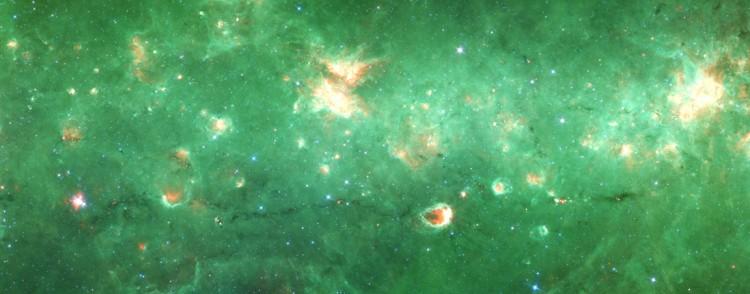A long skinny filament of dust and gas has been found in our galaxy that astronomers refer to as a “bone.”
The Milky Way is a spiral galaxy with a central bar and two main arms around its disc. Other spiral galaxies have endoskeletons or bones between their arms, which are best observed in infrared light.
Filament networks can be seen inside spiral discs when galaxy formation is simulated with computers. This new structure may well be such a filament.
“This is the first time we’ve seen such a delicate piece of the galactic skeleton,” said study lead author Alyssa Goodman at the Harvard-Smithsonian Center for Astrophysics (CfA) in a press release.
Goodman’s team were looking at a dust cloud called “Nessie” when they noticed the extent of the tendril. Its center had already been seen in 2010 using NASA’s Spitzer Space Telescope, but the new research reveals it is up to eight times longer than originally realized.
The “Nessie” bone looks rather like a snake. It is 1 to 2 light-years wide and over 300 light-years long, containing matter equivalent to around 100,000 suns.
“This bone is much more like a fibula—the long skinny bone in your leg—than it is like the tibia, or big thick leg bone,” Goodman said. “It’s possible that the ‘Nessie’ bone lies within a spiral arm, or that it is part of a web connecting bolder spiral features.”
“Our hope is that we and other astronomers will find more of these features, and use them to map the skeleton of the Milky Way in 3-D,” she adds.
The findings were presented at a meeting of the American Astronomical Society in California on Jan. 8.
The Epoch Times publishes in 35 countries and in 20 languages. Subscribe to our e-newsletter.





